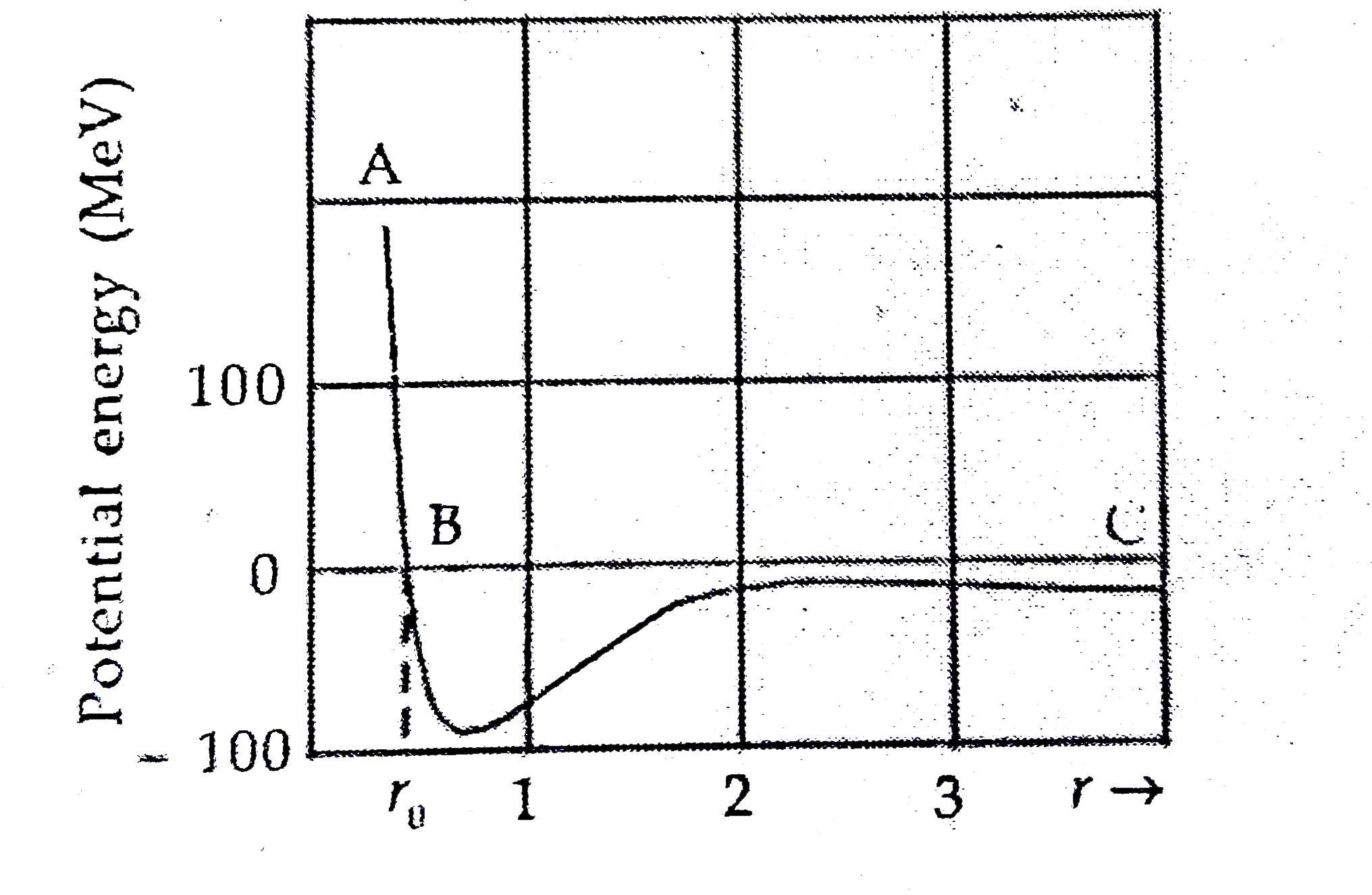(a) In a nuclear reaction 32He+32He→42He+11H+11H+12.86 MeV, though the number of nucleons is conserved on both sides of the reaction, yet the energy is released. How? Explain.
(b) Draw a plot of potential energy between a pair of nucleons as a function of their separation. Mark the regions where potential energy is (i) positive and (ii) negative.
(a) In a nuclear reaction, the sum of the masses of the target nuclues 32He and the bombarding particle 32He may be greater or less the sum of the masses of the product nucleus 42He and the 11He. So from the law of conservation of mass energy some energy some energy (12.86 MeV) is envolved in nuclear reaction . This energy is called Q-value of the nuclear reaction . The binding energy of the nucleus on the left side is not equal to the right side. The difference in the binding energies on two sides appears as energy released or absorbed in the nuclear reaction.
(b) The potential energy is minimum at r0. For distances larger than r0 the negative potential energy goes on decreasing and for the distances less than r0 the negative potential energy decreases to zero and then becomes positive and increases abruptly. Thus, A to B is the positive potential energy region and B to C is the negative potential energy region.

Topper's Solved these Questions
- BOOK - XII BOARD PREVIOUS YEAR PAPER ENGLISHCHAPTER - XII BOARDSEXERCISE - SET-II33videos
XII BOARDS
- BOOK - XII BOARD PREVIOUS YEAR PAPER ENGLISHCHAPTER - XII BOARDSEXERCISE - [SET - I]28videos
XII BOARDS
- BOOK - XII BOARD PREVIOUS YEAR PAPER ENGLISHCHAPTER - XII BOARDSEXERCISE - SET - II (Delhi Board)7videos
XII BOARDS
- BOOK - XII BOARD PREVIOUS YEAR PAPER ENGLISHCHAPTER - SAMPLE PAPER 2019EXERCISE - SECTION D6videos
SAMPLE PAPER 2019
Similar Questions
Draw a plot of potential energy of a pair of nucleons as a function of their separation . Write two important conclusions which you can draw regarding the nature of nuclear forces .
View SolutionIn a typical unclear reaction, e.g.
21H+21H→32He+n+3.27MeV,
although number of nucleons is conserved is conserved, yet energy is released. How ? Explain.
(b) Show that nuclear dendity in a given nucleus is independent of mass number A.View SolutionDraw a plot of potential energy of a pair of nucleons as a function of their separations. Mark the regions where the nuclear force is (i) attractive and (ii) repulsive. Write any two characteristic features of nuclear forces.
View Solution(a) The mass of a nucleus in its ground state is always less than total mass of its constituents - neutrons and protons. Explain.
(b) Plot a graph showing the variation of potential energy of a pair of nucleons as a function of their separation.View SolutionPotential energy of electron present in He+ is :
View SolutionComplete the reation :
3He2+2H1→4He2+......+EnergyView SolutionDraw the potential energy diagram for an exothermic reaction. Explain the terms:
threshold energyView SolutionIn the nuclear reaction Mg2412+He42→n10+(?) The product nucleus is
View SolutionThe ratio of the radii of the nucleons of .42He and .11H is
View SolutionNuclear energy is released in fusion reaction, since binding energy per nucleon is
View Solution

